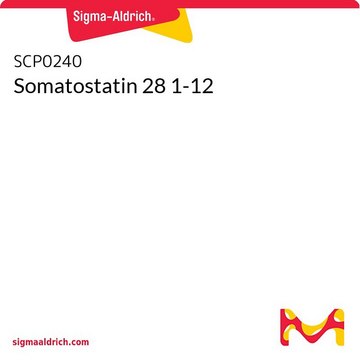BOTB9018
Lepidium meyenii Root powder
Botanical reference material
로그인조직 및 계약 가격 보기
크기 선택
보기 변경
500 μG
$466.00
1 MG
$862.00
About This Item
UNSPSC 코드:
12352200
NACRES:
NA.24
제조업체/상표
BOTANICERT®
응용 분야
food and beverages
pharmaceutical
형식
matrix material
저장 온도
2-25°C
1 of 4
이 품목 | SCP0174 | SCP0172 | SCP0240 |
|---|---|---|---|
| assay ≥95% (HPLC) | assay ≥95% (HPLC) | assay ≥95% (HPLC) | assay ≥95% (HPLC) |
| form lyophilized | form lyophilized | form lyophilized | form lyophilized |
| storage condition protect from light | storage condition protect from light | storage condition protect from light | storage condition protect from light |
| storage temp. −20°C | storage temp. −20°C | storage temp. −20°C | storage temp. −20°C |
| composition Peptide Content, ≥75% | composition Peptide Content, ≥75% | composition Peptide Content, ≥75% | composition Peptide Content, ≥85% |
일반 설명
English name: Maca, French name: Maca
This botanical reference material (BRM) is manufactured by BotaniCERT™ and EXTRASYNTHESE™. The material is sourced from botanical gardens, collected by botanical experts during the flowering period, analyzed by seasoned phytochemists and geneticians.
BotaniCERT Botanical Reference Materials are samples ofplants or plant parts (leaf, root, rhizome, fruit, flower, seed...) authenticatedby organoleptic criteria, macroscopic and microscopic examination, HP-TLC andHPLC phytochemical fingerprint and genetic markers by PCR. They are given with2 or 3 markers (ITS, matK, rbcL) and DNA sequences are reported.
The products are provided as 5g samples and a detailed Certificate of Analysis, including related pictures, chromatograms and DNA sequences is available.
Using a Botanical Reference Material in an identification analysis allows calibration of methods and increases the guarantee of the result obtained.
This botanical reference material (BRM) is manufactured by BotaniCERT™ and EXTRASYNTHESE™. The material is sourced from botanical gardens, collected by botanical experts during the flowering period, analyzed by seasoned phytochemists and geneticians.
BotaniCERT Botanical Reference Materials are samples ofplants or plant parts (leaf, root, rhizome, fruit, flower, seed...) authenticatedby organoleptic criteria, macroscopic and microscopic examination, HP-TLC andHPLC phytochemical fingerprint and genetic markers by PCR. They are given with2 or 3 markers (ITS, matK, rbcL) and DNA sequences are reported.
The products are provided as 5g samples and a detailed Certificate of Analysis, including related pictures, chromatograms and DNA sequences is available.
Using a Botanical Reference Material in an identification analysis allows calibration of methods and increases the guarantee of the result obtained.
애플리케이션
For identity and authenticity testing of botanical materials
법적 정보
BOTANICERT is a registered trademark of BOTANICERT, Société, FR
Storage Class Code
11 - Combustible Solids
WGK
WGK 3
Flash Point (°F)
Not applicable
Flash Point (°C)
Not applicable
가장 최신 버전 중 하나를 선택하세요:
E Papaoiconomou et al.
In vivo (Athens, Greece), 25(3), 343-354 (2011-05-18)
The Kiss-1 gene encodes a secreted protein that is proteolytically cleaved to produce a number of structurally related peptides, with high interspecies conservation, globally termed kisspeptins. The original niche for the role of kisspeptin in human physiology is derived from
Rafael Pineda et al.
Progress in brain research, 181, 55-77 (2010-05-19)
Reproductive maturation and function are maintained by a complex neurohormonal network that integrates at the so-called hypothalamic-pituitary-gonadal (HPG) axis. This system is hierarchically controlled by the decapeptide, GnRH, which in turn is under the dynamic regulation of multiple stimulatory and
Jenny Clarkson et al.
The Journal of neuroscience : the official journal of the Society for Neuroscience, 28(35), 8691-8697 (2008-08-30)
Kisspeptin and its receptor GPR54 have recently been identified as key signaling partners in the neural control of fertility in animal models and humans. The gonadotropin-releasing hormone (GnRH) neurons represent the final output neurons of the neural network controlling fertility
Naresh Kumar Hanchate et al.
The Journal of neuroscience : the official journal of the Society for Neuroscience, 32(3), 932-945 (2012-01-21)
Reproduction is controlled in the brain by a neural network that drives the secretion of gonadotropin-releasing hormone (GnRH). Various permissive homeostatic signals must be integrated to achieve ovulation in mammals. However, the neural events controlling the timely activation of GnRH
자사의 과학자팀은 생명 과학, 재료 과학, 화학 합성, 크로마토그래피, 분석 및 기타 많은 영역을 포함한 모든 과학 분야에 경험이 있습니다..
고객지원팀으로 연락바랍니다.


